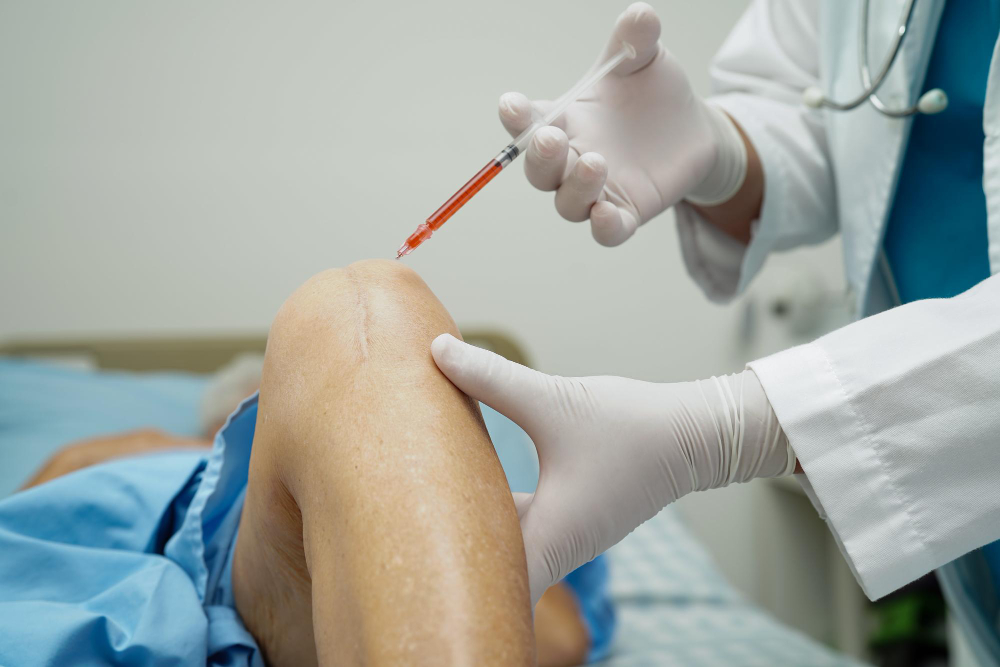Knee pain can limit your daily life. Many people look for safe, non-surgical knee pain relief. PRP therapy for knee pain is a modern treatment that uses your own blood to help heal your knee. Platelet-rich plasma (PRP) injections for knee pain are gaining popularity. In this blog, you will learn what PRP therapy is, how it works, its benefits, and what to expect during the process.
What is PRP Therapy?
PRP stands for platelet-rich plasma. It is a part of your blood that has many healing cells, called platelets. Doctors use PRP therapy to help your body heal faster. They take a small amount of your blood, spin it in a machine, and collect the platelets. Then, they inject this rich plasma into the area that needs healing, such as your knee.
How Does PRP Therapy Work for Knee Pain?
PRP therapy for knee pain works by using your body’s own healing power. When PRP is injected into your knee, the platelets release growth factors. These growth factors help repair damaged tissue and reduce swelling. As a result, you may feel less pain and move your knee more easily. Many people try PRP knee treatment for conditions like osteoarthritis or sports injuries.
Benefits of PRP Therapy for Knee Pain
There are several reasons people choose PRP therapy for knee pain. Some key benefits include:
According to studies in medical journals, PRP injections can help some people with knee osteoarthritis feel better for several months (source: PubMed).
Who is a Good Candidate?
Not everyone with knee pain will benefit from PRP therapy. However, you may be a good candidate if:
Still, PRP therapy may not be right if you have certain blood disorders or infections. Always talk to your doctor first.
The PRP Procedure: Step-by-Step
Many people wonder what happens during PRP therapy. Here is a simple step-by-step guide:
The whole process usually takes less than an hour. You can often go home the same day.
Risks and Side Effects
PRP therapy is generally safe because it uses your own blood. However, like any procedure, there are some risks. Possible side effects include:
Most side effects are mild and go away on their own. Still, always tell your doctor if you notice anything unusual.
Recovery and Aftercare Tips
After PRP therapy, you may feel some soreness. But, most people return to normal activities within a day or two. To help your knee heal, follow these tips:
Over time, you may notice less pain and better movement. However, results can vary from person to person.
Frequently Asked Questions
In summary, PRP therapy for knee pain is a promising, non-surgical option. It may help you move better and feel less pain. However, always consult an orthopedic specialist to find out if PRP therapy is right for your knee pain.

